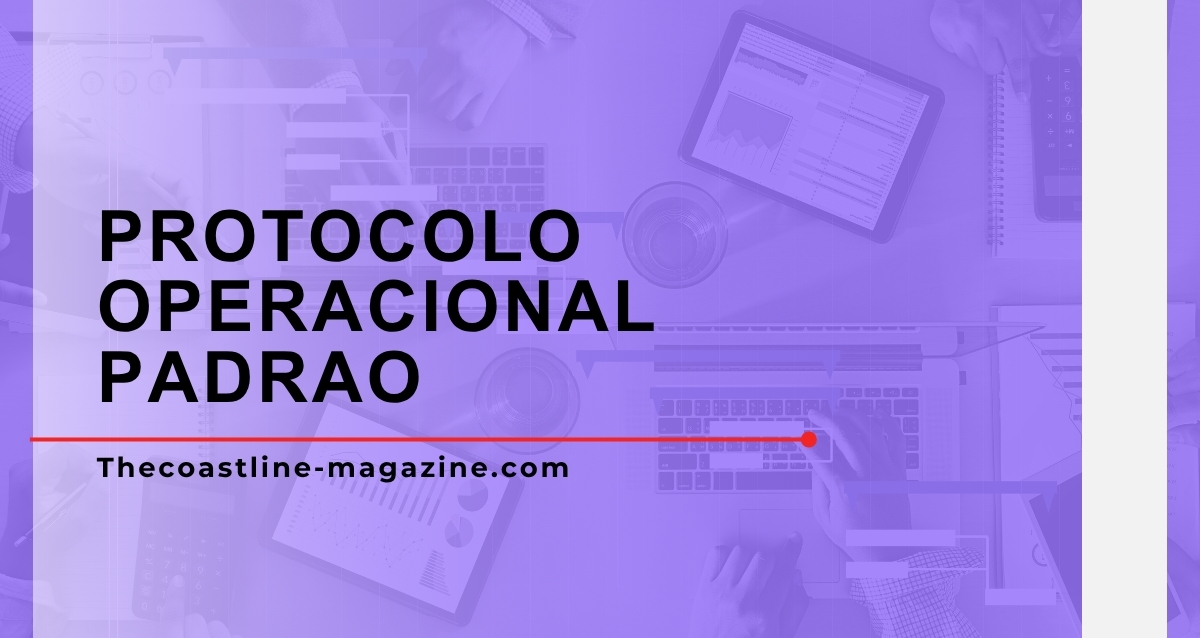In the fast-paced world of business, efficiency and consistency are key. Enter the Protocolo Operacional Padrao (POP), a powerful tool that can transform how organizations operate. But what exactly is a POP? Think of it as a roadmap for your team’s daily activities—guiding them through processes with clarity and precision. Whether you’re in manufacturing, healthcare, or any service industry, understanding and implementing effective protocols can lead to remarkable improvements in productivity and quality control.
Imagine having a structured approach to every task at hand. That’s where POPs come into play. They not only streamline operations but also foster accountability among team members. As we explore the ins and outs of Protocolo Operacional Padrao, you’ll discover its importance and how it can serve as an invaluable asset for your business strategy moving forward. Let’s dive deeper into this essential component of operational excellence!
Explanation of POP and its Purpose
Protocolo Operacional Padrao, or POP, serves as a structured guide for routine tasks within an organization. It outlines standardized procedures that ensure consistency and efficiency across various operations.
The primary purpose of a POP is to streamline processes, making it easier for employees to follow established protocols. This reduces errors and enhances productivity by providing clear instructions.
Additionally, POPs foster compliance with industry regulations and safety standards. They help organizations maintain quality control while minimizing risks associated with operational practices.
By implementing a robust POP framework, businesses can achieve better communication among teams and improve overall workflow. Each team member understands their roles clearly, leading to fewer misunderstandings and increased morale in the workplace.
Different Types of POPs
Protocolo Operacional Padrao (POP) comes in various forms, tailored to meet specific organizational needs.
Standard Operating Procedures (SOPs) are among the most common. These documents outline step-by-step instructions for routine tasks, ensuring consistency and quality in operations.
Another type is the Work Instruction (WI), which provides detailed guidance on performing particular tasks within a process. WIs often include technical specifications or safety measures, making them crucial for complex jobs.
For industries like healthcare or manufacturing, there may be Compliance Protocols. These POPs ensure adherence to regulations and standards set by governing bodies.
Training Protocols focus on onboarding new employees or upskilling current staff. They define learning objectives and assessment methods to enhance workforce competence.
Each type plays a vital role in streamlining processes, reducing errors, and boosting overall productivity across organizations.
Benefits of Implementing a POP
Implementing a Protocolo Operacional Padrao (POP) brings numerous advantages to organizations. First and foremost, it standardizes processes. This leads to consistent results across teams and departments.
Additionally, POPs enhance efficiency. When everyone follows the same guidelines, time is saved on training new employees or redoing tasks due to errors.
Another key benefit is improved communication. A well-defined protocol ensures that all team members understand their roles clearly, reducing misunderstandings.
Moreover, POPs support compliance with industry regulations. They provide a documented framework that can be easily reviewed during audits.
They foster a culture of accountability within the organization. Employees are more likely to take ownership of their tasks when clear expectations are set through established protocols.
How to Create an Effective POP
Creating an effective Protocolo Operacional Padrao (POP) begins with identifying the specific task or process it will address. Understand the workflow thoroughly; this knowledge forms the backbone of your document.
Next, involve key stakeholders in the creation process. Their insights ensure that all perspectives are considered and that no critical steps are overlooked.
Use clear, concise language throughout your POP. Avoid jargon unless necessary, as clarity is paramount for ensuring everyone can follow the procedures easily.
Incorporate visual aids where applicable—flowcharts or checklists can enhance understanding. These tools make complex processes more digestible and easier to implement.
Don’t forget about regular reviews and updates. Business environments change rapidly, so keeping your POP up-to-date ensures ongoing relevance and effectiveness in operations.
Real-World Examples of Successful POP Implementation
Many companies have successfully implemented Protocolo Operacional Padrao (POP) to streamline their operations. For instance, a well-known manufacturing firm adopted POPs to standardize equipment maintenance procedures. This initiative reduced downtime significantly and increased production efficiency.
In the healthcare sector, hospitals utilize POPs to enhance patient care protocols. By establishing clear guidelines for emergency responses, they improved response times and patient outcomes during critical situations.
Another example can be found in the food industry. A popular restaurant chain developed detailed POPs around food safety practices. This not only ensured compliance with health regulations but also built customer trust through consistent quality service.
Even tech startups leverage POPs for onboarding processes. This helps new employees understand company culture quickly while minimizing training time and enhancing productivity from day one.
Conclusion: Why POPs are Essential for Business Operations
Protocolo Operacional Padrao, or POP, plays a fundamental role in the smooth functioning of businesses across various industries. These standard operating procedures help streamline processes and ensure consistency in operations. By clearly outlining steps for tasks and responsibilities, organizations can minimize errors and increase efficiency.
Implementing a POP fosters accountability among team members. Everyone knows their role and what is expected of them. This clarity not only enhances productivity but also contributes to employee satisfaction as individuals feel more confident performing their duties.
Moreover, having established protocols is invaluable during training new staff. They provide an essential framework that helps newcomers understand company practices quickly and effectively. Over time, this leads to better service quality, reduced costs associated with mistakes, and improved overall performance metrics.
In sectors where compliance with regulations is critical—such as healthcare or food safety—POPs become indispensable tools for maintaining standards that protect both the business and its clients.
Businesses looking to evolve should prioritize creating effective Protocolo Operacional Padrao documentation tailored to their needs. The long-term benefits far outweigh initial investment efforts when it comes to refining operational strategies through standardized practices. Embracing this approach ultimately paves the way for sustained growth and success in today’s competitive environment.

